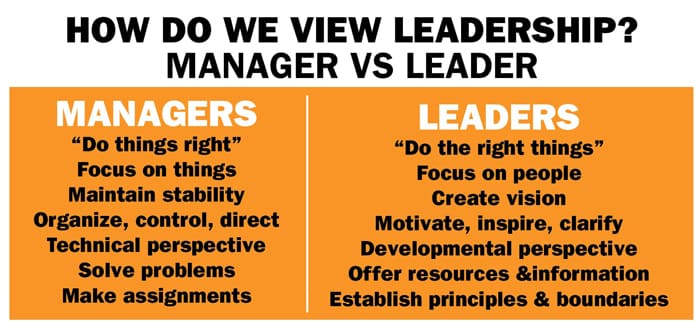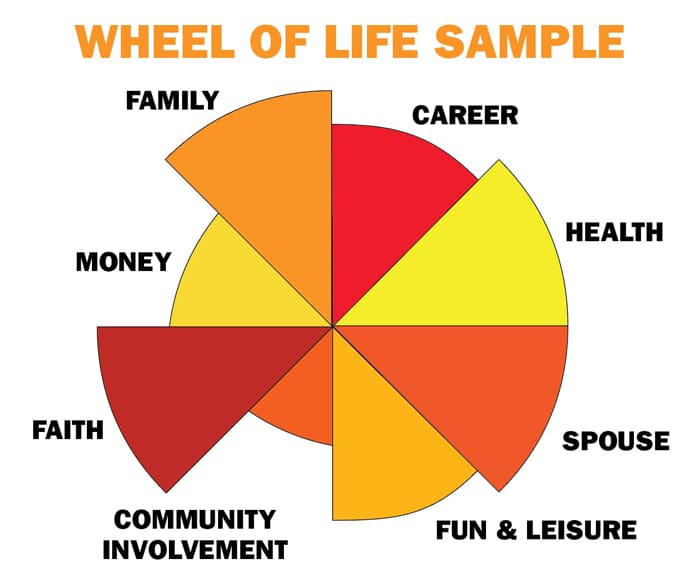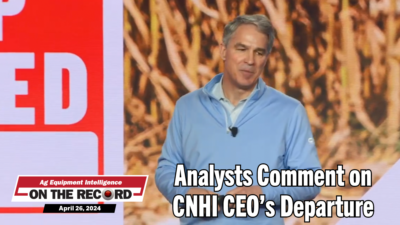In order to make one’s dealership better, investing in leaders is crucial. Brett Barriage, CEO of Premier Equipment, a 10-store John Deere dealership based in Ontario, discussed this during the first of a two-part leadership development presentation at the 2018 Western Equipment Dealers Assn. (WEDA) International Dealer Conference, Scottsdale, Ariz.
At Premier there are over 50 leaders, each of whom performed well in their roles as parts people, techs, salespeople, etc., and then were promoted. This promotion threw them into leadership/management type roles and asked them to produce results. For Barriage, this is why it is so important to invest in these employees and help them to grow.
Barriage broke his presentation into three sections: how they view leadership, how they find and determine leadership, and how they refine leadership. Viewing leadership is about how it is looked at from an internal standpoint and then how it is executed. Finding and determining leadership at Premier is about the amount of work that goes into determining who fits into a leadership role. The refining of leadership is where Barriage spent a majority of the presentation. Here he talks about how Premier develops leaders once they have them in the position.
Viewing Leadership
At Premier, the view on leadership comes down to leadership vs. management. On the manager side of things, the focus is on organization, control, directing and technical perspectives. On the leader side of things, the focus is on people, creating a vision and developing perspective.
Dealer Takeaways
• Dealerships need to find a balance between the manager-type focus and leader-type focus.
• The three key characteristics to look for in a leader are humble, hungry and smart.
• In order to lead others, you need to lead yourself effectively first. This means determining what is important in your life and working on improving that.
“Often in our industry, we have a lot of managers because the reality is they were good at what they did technically,” says Barriage. “They were good at the tasks of their jobs and so now they’ve been launched into this role where they have to produce results and take care of a group of people they’re responsible for.”
For Barriage, it is not about determining which role is better; it is about the need to find the balance between leaders and managers. In some instances, a manager-type focus is needed while in others, a leader-type focus is best. It is important to look at the people within the organization and determine their strengths and weaknesses.
The other way Premier looks at leadership is the controller vs. the empowerer. The controller views people more as objects and imposes their will on them. This can lead to followers who simply keep their heads down and end up doing only the minimum required, explains Barriage. The empowerer shapes and elevates people they work with. They create environments focused on motivation and commitment.

“This chart helps define how we look at leadership and management,” says Barriage. They use this chart to show the different ways leaders and managers view people and their roles in an organization.
Finding/Determining Leaders
In his discussion on determining leaders, Barriage brings up the book The Ideal Team Player by Patrick Lencioni. From the book, Premier has pulled three characteristics to look for with employees, especially leaders:
- Humble: An employee who is lacking an ego and is not concerned with seeking individual attention.
- Hungry: The employee who is always looking for more to do. They are self-motivated and rarely need an extra push to get work done.
- Smart: An employee with common sense about people who knows how to work with them in effective ways.
Premier uses the book as a way of filtering who the next leaders are for the organization and as a tool for growth for those leaders. The book comes with an assessment that all the leaders at the company have taken.
Humility is the characteristic that Barriage believes is the most important. As a leader, it is about being willing to put oneself in the line of fire when there is a failure and sharing the praise in successes. “The reality is, we're not perfect, we're human,” says Barriage. “Stuff happens. We're going to be strong in a couple areas and have one area to grow in and there's content that helps outline how someone might actually grow in that area.”
Refining Leadership
Refining leadership is critical and Premier uses a number of tools to do so. The first tool is a company based in Oregon called Building Champions. They have a philosophy based on the idea that in order to lead others effectively, you have to lead yourself effectively first. The first component to being able to lead oneself is the “life plan” component.
Leading yourself means defining what is important to you in your life and determining your priorities for those things and the actions you take to improve them. To do this, Premier uses a tool call the Wheel of Life exercise. Employees pick categories of things they feel are important — careers, family, health, etc. — and write them down on the wheel. At the center of each wheel is a zero and the edge has a 10. The employee determines where each of these important items sits on the 0-10 scale and then shades it in accordingly.
Each employee is then asked to pick one to three categories to work on. They are looking at where this category is on the scale, where they want it to be and how to get there. At Premier, they work with the employees on how to implement action steps and follow through with them.
“We really work at holding them accountable, with their permission, to grow,” says Barriage.
The second component of being able to lead oneself is the “business planning” component. The Building Champions program has a variety of components within the business planning one. Barriage notes that at Premier they like to keep it simple. He broke business planning down into two areas: vision to execution and high payoff activities (HPAs).
With vision to execution, it is about realizing what it is you need to do in business and then determining how that will happen. At Premier, they sit down with their leaders and talk this out, determining the products the teams are producing — this often comes back to meeting customer needs — and then outlining that. From there, they talk to the leaders about how this vision will be met.
“We hone in on action plans because the reality is it’s great to say you want to accomplish something but if the actual plans aren’t there, chances are it’s not going to happen,” says Barriage.
Premier spends a lot of time with leaders focusing on HPAs because of the 80/20 rule. With this rule, 20% of what leaders do results in 80% of the payoff. When discussing HPAs with leaders, they find out what each leader’s HPAs are and what they’re doing that produces the greatest results. These are all written out and leaders show where these things are on their calendars.
Business planning with leaders also involves going through a detailed budgeting process. Leaders set goals for their departments and show how they will reach those goals. This last year, Premier ran an internal program where all the department managers were together to set goals. In this setting, they would set goals for one manager in the department and then go around the room, giving targets and action plans to each other.
The dealership also runs Premier Leadership University (PLU) for its current and future leaders. PLU consists of internal programs that have experts running sessions. These sessions are offered once annually, and current leaders are required to take part in the courses.
“It’s one of those things that we're adding to every year, or taking away courses as well, but it’s been a good program,” says Barriage. “It’s neat to see the uptake and people that aren’t leaders, we often get requests sometimes, ‘Can I be involved in that program? I want to be a leader down the road.’”

The Wheel of Life Exercise is used to determine what is most important to an employee and the actions they will take to improve in those areas.
Premier also has anonymous leadership scores that helps determine where the dealership is at. Every leader and store have a score and Premier has a score as a whole. The assessments include the hungry, humble and smart characteristics on top of assessing goals, action plans and improvements. These assessments are helpful in measuring leadership in the organization rather than just talking about it.
The last aspect of refining leadership that Barriage discusses was Performance Management – Coaching for Success (PMs). These are monthly meetings that he has with everyone he is directly responsible for. The meetings are planned ahead of time and include three sections: business from the previous meetings, an employee’s section and Barriage’s section.
In the employee’s section, they are able to bring up and discuss any matters they want such as actions that need to happen. The third section — what Barriage calls the “my section” — is where he discusses certain topics like financials and the areas the dealership is monitoring. At the end of each meeting, the next meeting date is set.
Something that is said often at Premier, according to Barriage, is “you can’t inspect what you don’t expect.” This phrase applies back to expectations and accountabilities that the dealership has of their employees and leaders. Decisions sometimes need to be made about what is best for the group rather than what is best for the individual.
“You have to free up someone’s future sometimes,” says Barriage. “Maybe we have made the wrong decision in hiring somebody and they couldn’t grow. You have to do what is best for the organization and for the individual.”
For Barriage, it is important to make sure that his people’s time is important. Being proactive and having these meetings assures that the leaders are being talked to with regard to their performances and how they are doing. It also allows them to have open dialogue and provide feedback to Barriage and Premier.
“Our jobs as leaders/managers exist because problems exist, because humans are human, we make mistakes. If there weren’t things to fix and deal with a, then a lot of managers jobs probably wouldn't exist,” says Barriage. “As a company we have just chosen to be really proactive and invest in our leaders.”







Post a comment
Report Abusive Comment